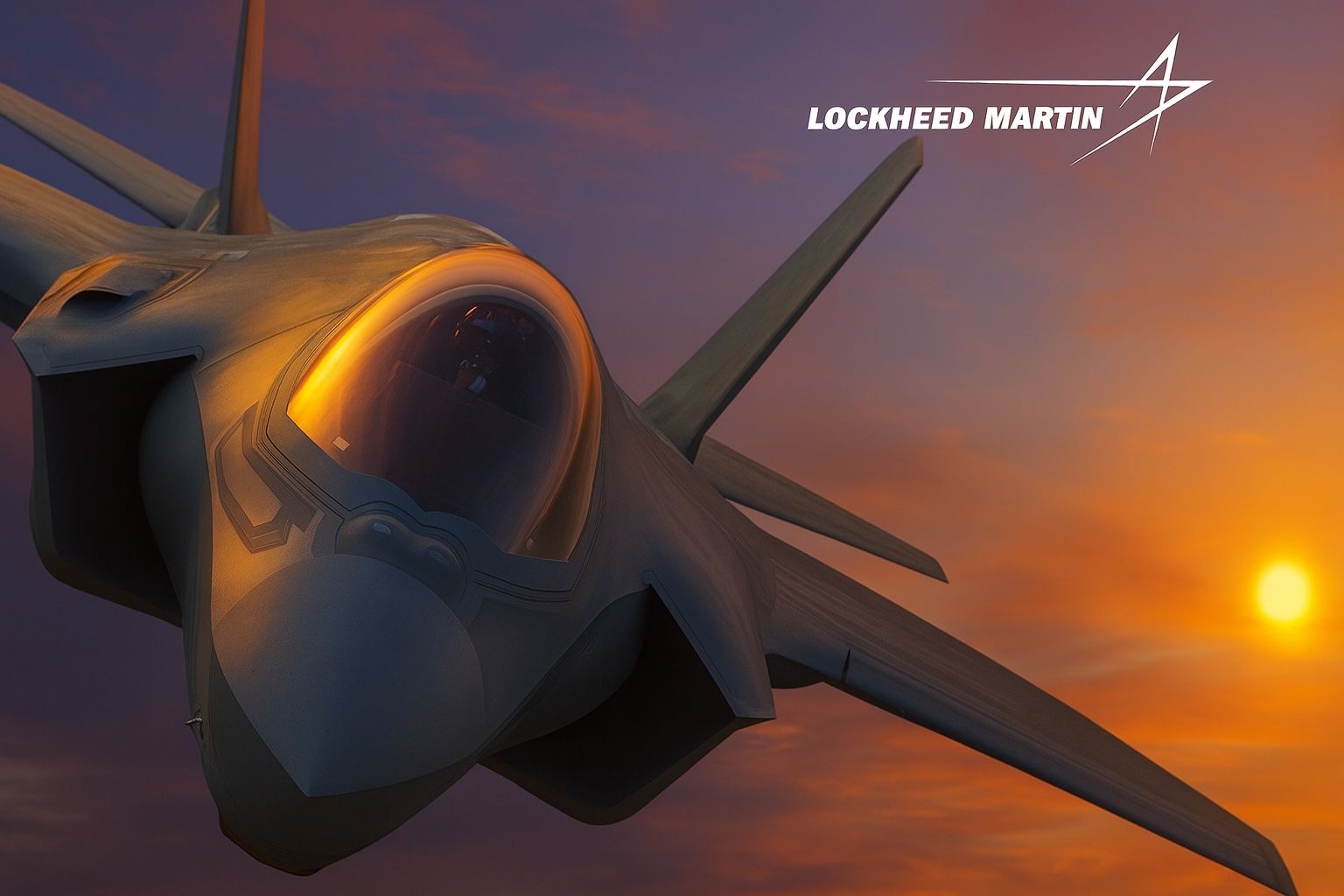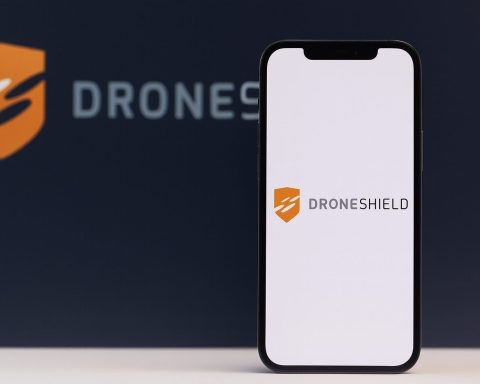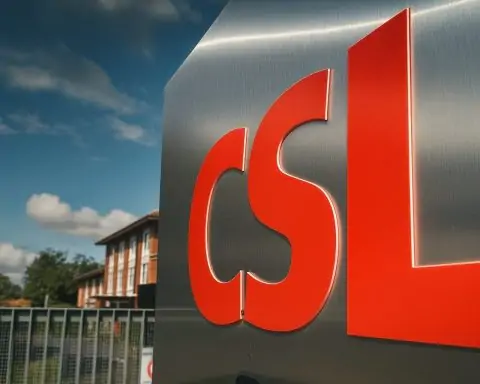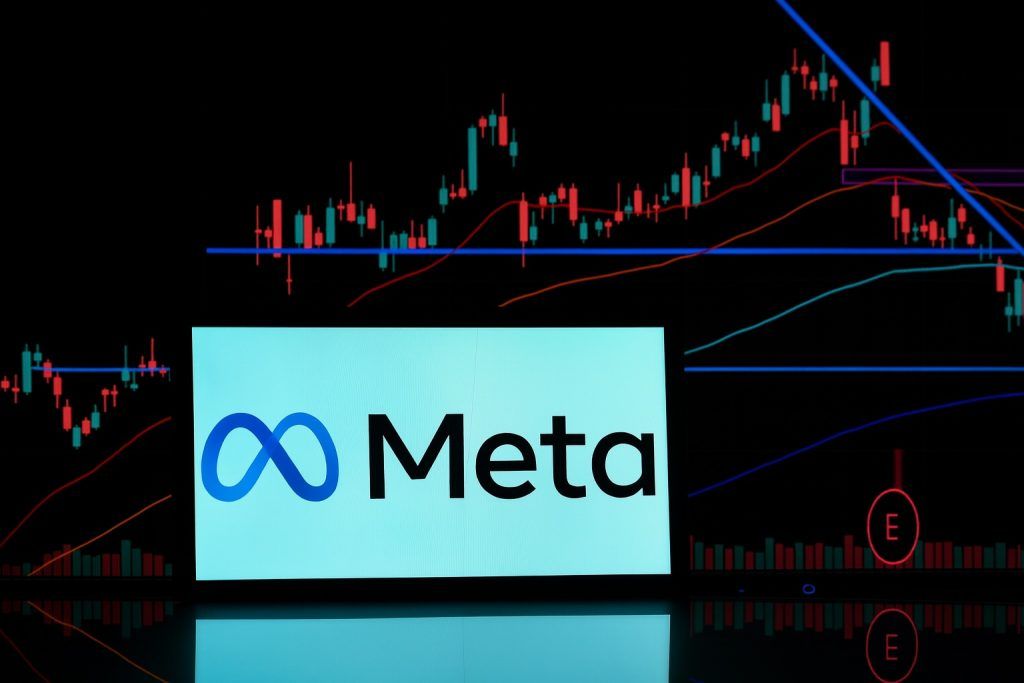- Stock Price: ~$505, up ~0.2% on Oct. 15 (around flat on the day) [1]. 52-week range: low $410.11 – high $618.95 [2] [3].
- Market Cap: ~$117.8 billion; P/E: ~28.4; Beta: 0.28 [4]. Dividend yield ~2.7% after a recent 5% hike to $3.45 per share [5].
- Recent Trading: After peaking near $619 last fall, LMT shares bottomed around $410 in July 2025 and have since rebounded [6]. The stock trades well above its 50-day (~$468) and 200-day (~$463) moving averages [7].
- Financials: In Q2 (reported July 22), Lockheed earned $7.29 EPS (above $6.57 consensus) on $18.16B sales [8]. It set FY2025 guidance at $21.70–22.00 EPS [9].
- Investor Actions: The board recently approved a $2 billion expansion of its stock buyback (bringing total authorization to ~$9.1B) and raised the Q4 dividend to $3.45 (up 5%) [10] [11].
Stock Performance Today and Recent Trend
Lockheed’s stock opened around $504.8 on Oct. 15, 2025 and is roughly flat on the day [12]. Over the past week it has seen minor fluctuation but remains in a broad trading range. After falling as low as ~$410 in mid-July (post-Q2 earnings), LMT has rebounded over 20% and is now about 18% below its 52-week high [13] [14]. Volume remains healthy and trading above its 50-day/200-day averages, reflecting continued investor interest.
Despite some recent volatility, analysts note that LMT has strong governmental support. “Lockheed Martin makes 97% of its revenue from the U.S. government. They are basically an arm of the U.S. government,” said analyst Lawrence Lutnick – a comment that actually helped lift shares about 1.6% [15]. Lockheed’s own statement echoed this: “We are continuing our strong working relationship with President Trump and his Administration to strengthen our national defense” [16]. In short, investors see LMT as deeply tied to rising U.S. defense spending, providing some downside protection.
Major Contracts and Business News
Recent weeks have brought several large contract wins and project developments for Lockheed Martin:
- $11.4 B US Navy CH-53K order: In late September, Lockheed’s Sikorsky unit won an estimated $11.4 billion contract to supply up to 99 CH-53K heavy helicopters (the largest order ever for that helicopter) [17]. This order underscores sustained Marine Corps demand and is a boon to LMT’s rotary-wing business.
- $9.8 B Patriot Missile deal: Also in September, the U.S. Army awarded Lockheed a $9.8 billion contract for its Patriot air-and-missile defense system [18]. It is the largest-ever Patriot order and reflects global demand for advanced air defense.
- Spike NLOS $30M Phase 2 Award: On Oct. 15, Lockheed announced that its Spike Non-Line-of-Sight (NLOS) missile system was chosen by the U.S. Army for Phase 2 of the Mobile-Long Range Precision Strike Missile (M-LRPSM) competition. The new Phase 2 contract is valued at $30 million and will fund integration and testing of Spike NLOS on ground vehicles [19]. Lockheed’s project director, Casey Walsh, hailed the selection as a “significant achievement,” saying the mature Spike system will give Army brigades much-needed long-range strike capability [20].
- European THAAD Sales: Lockheed executives are also aggressively marketing the THAAD missile defense system in Europe. Business President Michael Williamson told Reuters that the company is negotiating potential THAAD deals (system cost €1–2 billion each) as European nations shore up air defenses [21]. This follows recent European interest in Patriot missiles and radar systems.
Aside from contracts, Lockheed made an acquisition to bolster its capabilities. A few months ago, LMT paid roughly $360 million for Amentum’s Rapid Solutions unit, enhancing Lockheed’s radar and electronic warfare offerings [22]. Lockheed has also begun deliveries of new Belgian F-35 fighters and is expanding its Patriot-3 missile production (in partnership with Diehl Defence).
Dividends and Capital Return
Lockheed has been rewarding shareholders. In early October the board boosted the quarterly dividend by 5% to $3.45 per share (payable Dec. 30, 2025) [23]. That equals a ~$13.80 annual dividend, or about 2.7% yield at current prices [24]. The Q4 payout is payable Dec 30 to holders of record Dec 1. Meanwhile, Lockheed increased its stock buyback authorization by $2 billion, bringing total buybacks to around $9.1 billion [25]. These moves signal confidence in cash flow and are aimed at lifting shareholder returns. As one analyst notes, LMT continues “to be among companies betting big on themselves,” given its aggressive buybacks [26]. (Indeed, institutional investors now hold over 74% of the stock [27].)
Analyst Commentary and Outlook
Wall Street opinions on LMT are mixed but have generally improved since mid-year. Notably, Morgan Stanley upgraded Lockheed Martin to Overweight, raising its 12-month price target from $530 to $630 on Oct. 15 [28] – one of the highest targets on the Street. Morgan’s bullish view contrasts with Goldman Sachs, which raised its target only to $425 and still maintains a Sell rating [29]. Other recent actions: Susquehanna (Positive) lifted its target to $590 [30]; Truist (Hold) raised its target to $500 (from $440); Deutsche Bank bumped its target to $519; TD Cowen to $520. Overall, analysts’ average target is now about ~$503 (implying little near-term upside) [31].
Quotes from analysts capture the cautious yet evolving mood. Goldman’s Noah Poponak stressed downside risks after Q2 charges: he warned that “ongoing problems [at Lockheed] could hurt profits, reduce cash flow, and make future earnings less predictable” [32]. Other analysts trimmed 2025 forecasts last quarter; for example, Truist’s Michael Ciarmoli cut Lockheed’s 2025 EPS outlook toward ~$21–22 (matching the company’s own guidance) [33].
On the other hand, some industry experts highlight strong demand drivers. Jon Siegmann of Stifel notes that winners in defense will be those “leaning into the change and investing in low-cost, upgradable, and software-enabled weapon systems” [34] – a nod to Lockheed’s push in areas like hypersonics and missile defense. Church Hutton of AeroVironment agrees that the Trump administration is pushing rapid procurement: “This administration has been very clear on the need for our warfighters to get the equipment they need at a much faster pace,” he said [35]. Seaport Research analyst Richard Safran adds that investors are simply “follow[ing] the money” into defense tech [36].
In sum, analysts expect solid defense budgets (Lockheed enjoys very high visibility) but are keeping some caution due to cost overruns in legacy programs. Consensus forecasts for LMT’s FY2026 EPS range from the low $20’s to mid-$20’s. With a dividend yield near 3% and buybacks reducing share count, even modest growth in sales should support further gains. One Morgan Stanley strategist sums up the mood: after raising its price target, he noted Lockheed’s “deep backlog of missiles and fighters” amid high global military spending – key positives for the stock [37].
Defense Sector Trends
Lockheed’s performance must be viewed in the context of a surging defense sector. The S&P Aerospace & Defense index is up roughly 34% in 2025, far outpacing broader markets [38]. Legacy primes like Raytheon Technologies (RTX) and Northrop Grumman (NOC) have climbed too – RTX is +37% YTD and NOC +23% [39]. This rally is driven by geopolitical crises (Ukraine, Middle East) and U.S. policy. The Trump administration has signaled record budgets (FY2026 request ~$892B) with particular boosts for missiles, drones and modern tech [40]. For example, Pentagon funding for unmanned systems is up ~78% from last year [41].
Analysts point out that much of the sector’s upside may come from newer areas – artificial intelligence, cyber, missile defense and unmanned vehicles – rather than traditional hardware. Luke Czinger, CEO of a Lockheed-linked startup, describes a “tens of thousands” order pipeline for low-cost drones and munitions being funded now [42]. Lockheed itself is investing heavily in these trends (e.g. its Radar acquisition, PAC-3 MSE missile upgrades, and the F-35 software refresh). At a recent industry show, Stifel’s Siegmann said, “The winners… will be those leaning into the change and investing in upgradable, software-enabled systems” [43] – advice that fits Lockheed’s pivot to next-gen weapons.
Valuation and Outlook
At roughly $505 and ~$117.8B market cap, Lockheed trades at about 19x 2025 EPS (using GAAP EPS guidance ~$22) or ~24x at 2024 EPS. Its trailing P/E of 28 is higher, reflecting recent profit hits from program charges. The stock’s beta of ~0.3 [44] signals its defensive, low-volatility nature: Lockheed reliably collects long-term government business even in uncertain times. On a PEG basis (~1.7 [45]), some analysts argue LMT still looks attractive given consistent dividend and buyback growth.
Historically, Lockheed’s valuation has compressed when program issues arose (late 2024) and expanded on optimism. With Q3 earnings due around Oct. 21, investors will watch for any updates on F-35 technology fixes and classified program status. Long-term, the stock has averaged mid-to-high 20s P/E during stable periods. Given the defense tailwinds, many analysts see upside to current consensus: one cited Morgan Stanley’s $630 target (implying ~25% upside) [46]. Yet others note a moderate average target (~$503) suggesting a cautious market consensus.
Peer Comparison
Lockheed Martin’s main peers include Northrop Grumman and RTX (Raytheon). These firms enjoy similar defense spending trends but with different program mixes. For example, Northrop benefits from stealth bombers (B-21) and space systems, while RTX has missile systems and aircraft engine divisions. As noted, NOC and RTX are both up strongly this year [47]. Valuation multiples are broadly comparable: NOC trades above $600 (P/E mid-to-high 20s) and RTX near $100 (mid-20s P/E). Lockheed’s dividend yield (~2.7%) is higher than RTX’s (~2.0%) and roughly on par with NOC (~3.0%). All three stocks offer premium yields relative to the broader market, reflecting their durable cash flows.
Bottom Line: Lockheed Martin’s stock is holding firm amid a flurry of contract wins, heightened buybacks/dividend payouts and strong sector momentum. Analysts are divided – some remain cautious on program execution, others bullish on defense demand and buybacks. But clear near-term drivers (massive U.S. defense budgets, major program wins) give LMT a solid foundation. As Stifel’s Siegmann puts it, the coming winners in defense will be those embracing next-gen, software-driven systems – a market where Lockheed is heavily invested [48]. Investors will be watching this week’s trading closely for market reactions to any new developments, but the general trend in aerospace/defense remains up for now.
Sources: Author’s analysis of Lockheed Martin filings, Reuters, Yahoo Finance, and other market reports (Bloomberg, CNBC etc) for quotes and data [49] [50] [51] [52] [53] [54] [55].
References
1. www.marketbeat.com, 2. www.marketbeat.com, 3. www.benzinga.com, 4. www.marketbeat.com, 5. www.marketbeat.com, 6. www.benzinga.com, 7. www.marketbeat.com, 8. www.marketbeat.com, 9. www.marketbeat.com, 10. news.lockheedmartin.com, 11. www.marketbeat.com, 12. www.marketbeat.com, 13. www.benzinga.com, 14. www.marketbeat.com, 15. www.reuters.com, 16. www.reuters.com, 17. www.reuters.com, 18. www.reuters.com, 19. news.lockheedmartin.com, 20. news.lockheedmartin.com, 21. www.reuters.com, 22. www.reuters.com, 23. news.lockheedmartin.com, 24. www.marketbeat.com, 25. news.lockheedmartin.com, 26. www.marketscreener.com, 27. www.marketbeat.com, 28. www.marketscreener.com, 29. www.marketbeat.com, 30. www.marketbeat.com, 31. www.marketbeat.com, 32. www.benzinga.com, 33. www.benzinga.com, 34. www.reuters.com, 35. www.reuters.com, 36. www.reuters.com, 37. www.marketscreener.com, 38. www.reuters.com, 39. www.reuters.com, 40. www.reuters.com, 41. www.reuters.com, 42. www.reuters.com, 43. www.reuters.com, 44. www.marketbeat.com, 45. www.marketbeat.com, 46. www.marketscreener.com, 47. www.reuters.com, 48. www.reuters.com, 49. www.reuters.com, 50. www.reuters.com, 51. news.lockheedmartin.com, 52. news.lockheedmartin.com, 53. www.reuters.com, 54. www.reuters.com, 55. www.marketbeat.com










